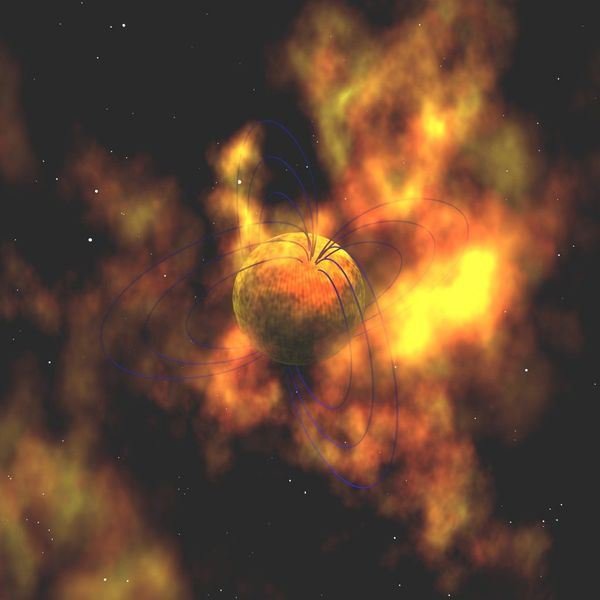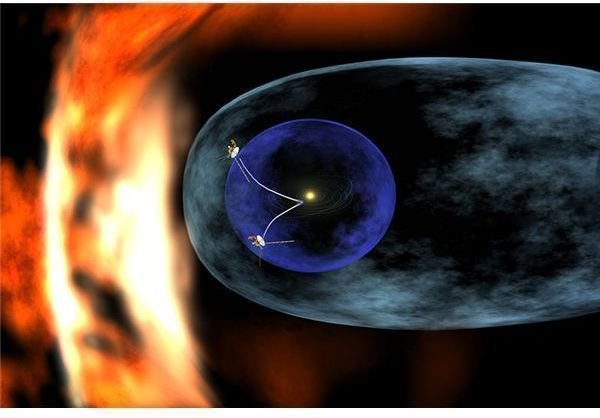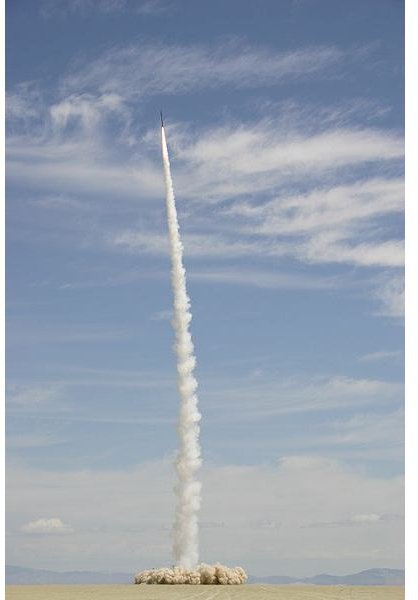What is Outer Space?
Is There a Line in Outer Space?
The term “outer space” was first used by H.G. Wells in his novel First Men in the Moon in 1901, and it is synonymously used with the shorter term “space,” which was first used in John Milton’s Paradise Lost in 1667 (Harper 2001).
Outer space is the common term used for the areas between celestial bodies and outside of their atmospheres. Although we think of it as being empty “space,” that is not truly the case. Outer space is not completely empty; rather it contains hydrogen, plasma, particles and electromagnetic radiation, as well as dark matter and dark energy, although the latter two have not yet been observed or scientifically proven.
Outer space is most commonly used as a term to describe the area beyond the Earth’s atmosphere, although no clear boundary exists between these two regions. In reality, the density of the atmosphere gradually decreases as altitude increases. Still, The Feder Fédération Aéronautique Internationale has established a line called the Kármán line at an altitude of 100 kilometers (62 mi) as a distinction between aeronautics and astronautics . The United States has an alternate determination of the “line” between airspace and outerspace, defining it as 80 kilometers (50 miles) above the Earth’s surface (Anissimov 2008). Similarly, anyone who travels at an altitude of above 50 miles is considered by the US to be an astronaut.
The first amateur rocket to exceed the Karman line. May 17. 2004, Black Rock Desert, Nevada.
Image Credit: Wikimedia Commons (<em>https://commons.wikimedia.org/wiki/File:Kluft-photo-CSXT-2004-amateur-space-launch.jpg</em>)
What is Outer Space Like?
Outer space is the closest we can get in nature to a perfect vacuum. In a vacuum there is essentially no friction, allowing all bodies to move freely along their trajectories. This is an ideal situation, though; even in intergalactic outer space there are still a few hydrogen atoms per cubic centimeter. The deep vacuum provided by outer space does provide an attractive environment for many of Earth’s industrial processes, though, such as those that require extreme cleanliness.
Humans who are exposed to outer space will lose consciousness after just a few seconds and die within a few minutes due to hypoxia, which is a lack of oxygen in the blood. When the pressure of blood and other body fluids falls below 6.3 kPa (the vapor pressure of water at body temperature) they will boil. This is called ebullism. The steam will bloat the body and cause it to swell, but contrary to popular thought, a person will not explode when exposed to outer space. The tissues in the body are elastic and porous enough to prevent this from happening (Harding). Water vapor would evaporate from exposed areas in this environment, causing frost to form on such areas as the lungs, eyes, and mouth.
More dangerous than the vacuum environment is the rapid decompression that occurs with exposure to space. Eardrums, sinuses and even the alveoli in the lungs can rupture, causing blood loss, shock, and finally hypoxia. Even small drops in pressure can be fatal, if they occur too quickly.
Computer renderings of plasma clouds around a star.
Image Credit: Wikimedia Commons (<em>https://commons.wikimedia.org/wiki/File:Magnetar.jpg</em>)

Other Areas of Outer Space
Inter-galactic Space
Intergalactic space is the space that occurs between galaxies. This area is mostly free of dust and debris, making it very near a complete vacuum. Surrounding the galaxies and stretching between them there is a plasma that occurs called the intergalactic medium (IGM). It is mostly ionized hydrogen and it is thought to exist at a density of 10 to 100 times the average density of the universe [This could be from 10 to 100 hydrogen atoms per cubic meter.] (“Inter Galactic Medium”).
Inter-planetary Space
Outer space within the solar system is called interplanetary space, which passes over into interstellar space at the heliopause, the boundary of our solar system. This space is sparsely filled with cosmic rays, ionized atomic nuclei, and various subatomic particles, gas, plasma, dust, small meteors, and several dozen types of organic molecules seen by microwave spectroscopy (“outer space”). Interplanetary space is defined by the solar wind, a stream of charged particles which flows from the Sun.
Voyager 1 Entering the Heliosheath (Solar Wind)
Image Credit:Wikimedia Commons (<em>https://www.nasa.gov/vision/universe/solarsystem/voyager_agu.html</em>)

References
Anissimov, Michael. “What is the Karman Line?” www.wiseGEEK.com. https://www.wisegeek.com/what-is-the-karman-line.htm
Harding, Richard M. (1989), .
Harper, Douglas. “Outer Space.” Online Etymology Dictionary. https://www.etymonline.com/index.php?search=outer+space&searchmode=none
“Inter Galactic Medium.” The Virgo Consortium https://www.virgo.dur.ac.uk/
“Outer Space.” https://en.wikipedia.org/wiki/Outer_space
